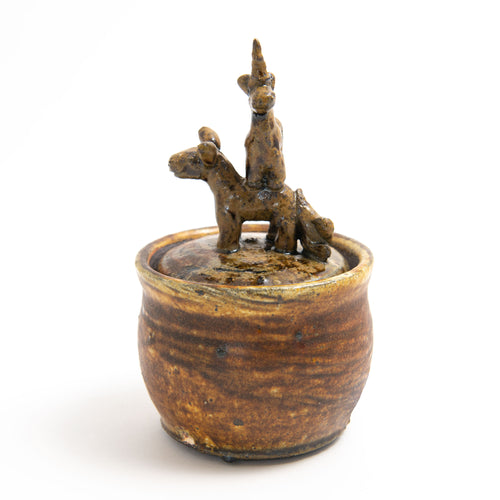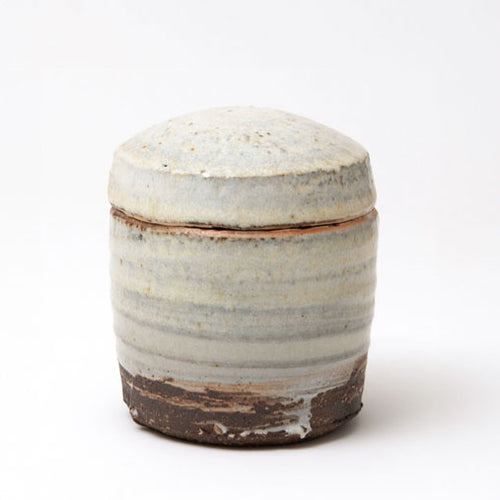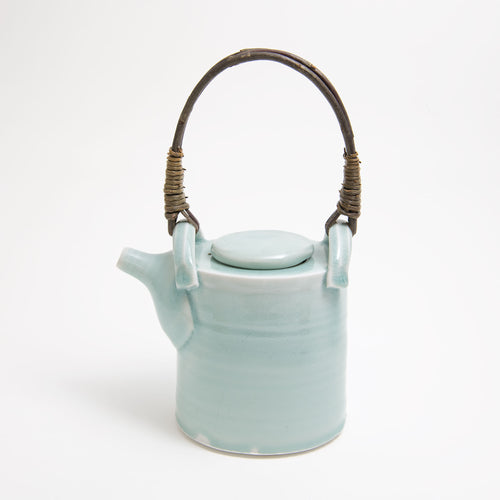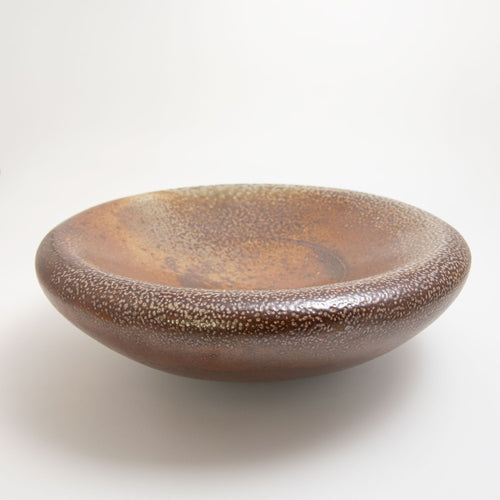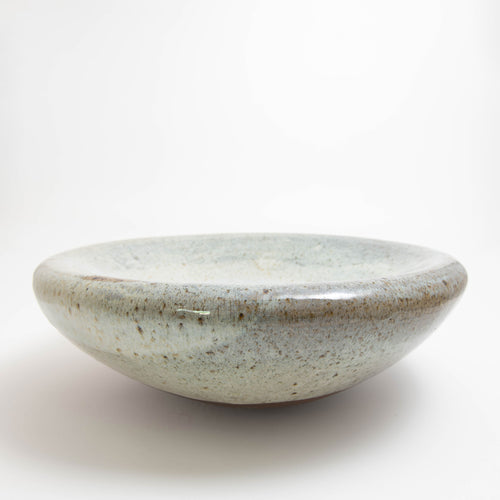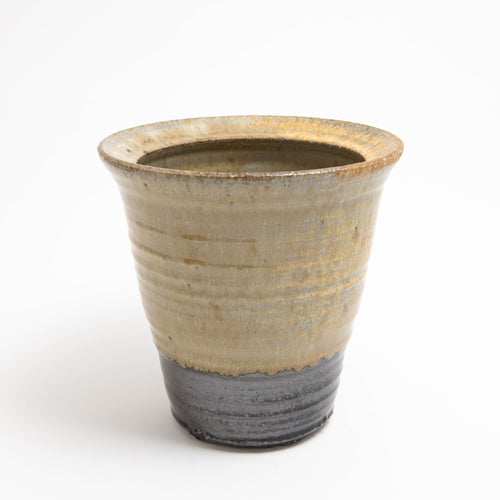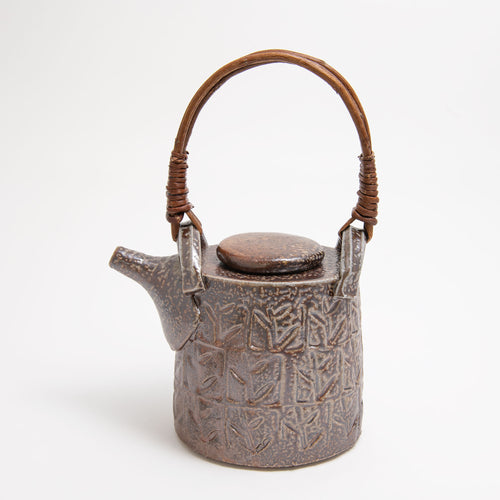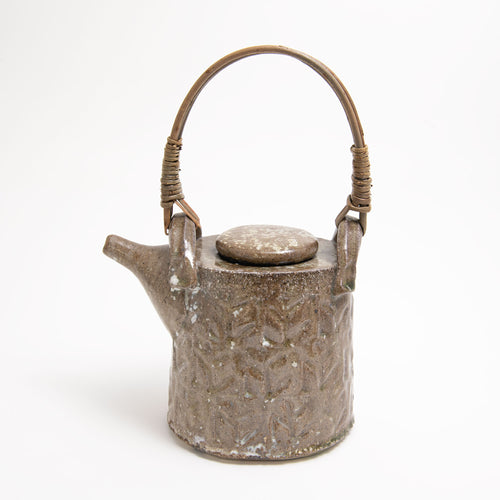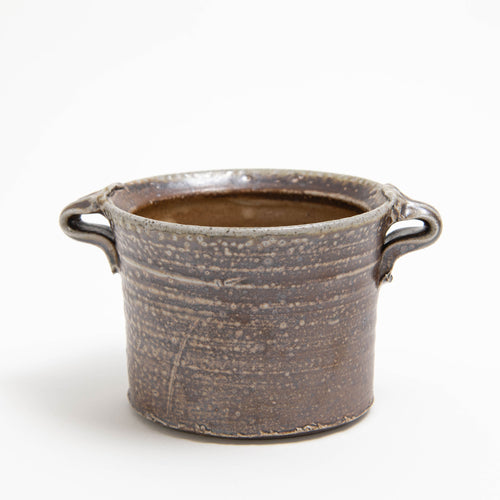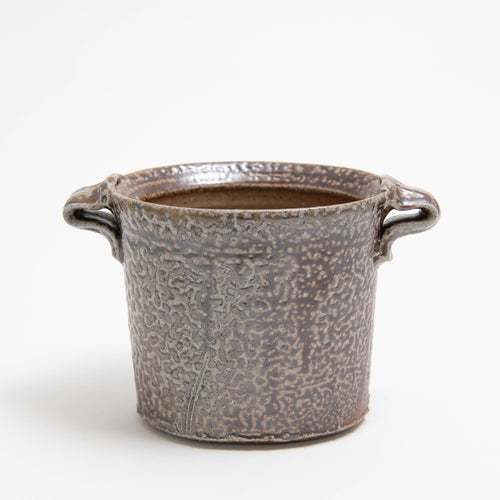Earlier this Autumn we sent our photographer and filmmaker to visit the wonderful Danish potter Anne Mette Hjortshøj ahead of her November 19th exhibition at the Goldmark Gallery.
The show - all 379 pots - has almost completely sold out. Published here is a special interview with Anne Mette, featured in our Autumn Catalogue.

GG: Since we last saw you at your 2012 exhibition at the Goldmark Gallery, what have you been up to?
AMH: A week ago I carried work for my November show downstairs and I’m sitting now amongst the best pots of four years with the kiln I built when I had my first exhibition with the Goldmark Gallery. So some pots are four years old, almost, and many pots are from the last firing that we opened yesterday. And it has been quite an unexpected adventure since that exhibition.
When I had my first show, I had my studio somewhere else on the island, so we moved to this farm and built a workshop and a kiln. It’s been a lot of ‘trial and error’, I think is the British way of saying we’ve been throwing out a lot of things and had a lot of new firings.

GG: I hear that the Queen of Denmark came to visit your studio – how did that happen?
AMH: When the film from my 2012 exhibition came out it was shown on Danish television. And it happened that the Queen of Denmark that year would be coming to Bornholm on an official summer visit. The Queen herself is a ceramics collector and after she saw the film she asked if she could come and see my workshop. She even stayed 12 minutes longer than expected; we’re a little proud of that.

It was a very strange, peculiar, but quite amazing experience. She knows a lot about pots: they have a very big collection in the royal family. We were invited to her boat for an official dinner the evening before and she told me, ‘I remember from my childhood my father always picked up ceramics up a certain way, looking at the back, just checking if the surface is ok and what the clay is like.’ Potters do that too.

GG: You also mentioned that you’ve had a lot of potters get in touch to come and visit.
AMH: In July we were very lucky to have a Japanese potter from Mashiko who’s a friend of mine working in our studio for around six weeks in a kind of ‘artist in residence’ situation. He had a mission: he wanted to work with only Bornholm local materials, because I’ve been bragging a lot about the island. So we spent two weeks in my old car driving around discovering lots of new materials I hadn’t tested before.

I’ve never been to Japan, but I’ve been to Korea many times now, and it's a big inspiration for me, this part of the world. I work with stoneware, and I work with traditional glazes, and I work with classical shapes, and a lot of it comes from Asia.

GG: Are you influenced at all in your work by where you live on Bornholm?
AMH: I’m not local. Originally I’m from the mainland, but I’ve lived here now almost since I graduated. It’s been a potters’ island since at least the 17th century.
I think the inspiration from here is not something I think about, or that's visible, but how your clay looks when it is fired or when it’s wet tells you a lot about where you come from. I use a lot of different clay types and very few glazes. If you throw, the personality is very different from one clay to the other, and especially if you take the clay fresh from the ground. In a line of tea bowls you can see that even though it’s exactly the same amount of clay, they are so different from each other depending on the materials.


That’s the signature, that's where I come from. Variations in colour and depth and structure and - what is the word in English? In Danish we have a very good word, stoflighed; it’s an old word, but I think it’s coming back. Stoflighed – texture, or materiality - is important to me. And that’s what clay is, all these things that are just underneath the surface.

GG: Just recently you opened the kiln after your last firing – are you worried or relieved when the pots emerge each time?
AMH: It’s not a very long firing in our wood kiln - between 24 and 30 hours. But it takes a long time for the kiln to cool, so we wait for five days before we open, which is nice, because you can look at everything with fresh eyes. I never judge the pots when I first open the kiln. It’s not a big kiln, but there are a lot of results to deal with: all the different clay types, the new shapes, old shapes with new materials, and you have to leave that alone for a little while.

I really like the results you can get from this way of firing, but it involves a lot of risk. It’s difficult when you have a bad firing, and expensive - not in the sense of money, but it costs a lot of energy. One very satisfying thing with being a craftsman is that you make things and at the end of the day you can see that you’ve done something. It’s a very straightforward satisfaction. But then, if there’s nothing left after the firing…

On the other hand, there are so many other treasures you can get with it. If you fire an electric kiln, what you put in is what comes out. But when you work with a wood kiln, and salt glazing, then you get surfaces, colours, combinations that have nothing to do with what I did: it’s the kiln you can say thank you to. It’s nice to be able to say this is beautiful, not because I made it, but because the glaze and the slip and the firing came together in a very beautiful way.
If you are a craftsman, you work with your own things, it's a never ending, ‘I did this, I did that’; it’s too much sometimes. So it’s very nice to have a colleague in the kiln, to say, ‘woah; the kiln did that.’

GG: Have you got any favourite pieces from your upcoming show?
AMH: I spend most of my time in the studio working on my wheel, and I like the process, but sometimes it’s nice to get away and do something different. So I started making these press-moulded square bottles, in which you have a flat canvas that you can work on and that can show off the glazes. I see the materials in a different way when I see this canvas, when I see a picture more than I see a three-dimensional object.


GG: What is it that you enjoy about working with the Goldmark Gallery?
AMH: Sometimes people come and visit and they ask me where and how I sell my work. And then I get a little quiet, because I don’t really know how to explain to people that I ship everything in a box and the gallery takes care of the rest. And then I say that this gallery is in a small town in the English countryside, but there are more than 20 people employed there. People don’t get that either. And I say to them that I can make what I want. There is no, ‘and then we want you to do this and that’: it’s up to me. That’s nerve-racking, because I can’t blame somebody else for what is good or bad, it’s my responsibility; but it’s kind of crazy that a gallery like this exists.

I am really bad at selling work. I can’t do it. I just like to be in the workshop, making and firing and glazing, like I know many potters do, so it’s crazy I can just take the best pieces from each firing. It’s very hard to decide which is best. But that's a very good challenge too, of course. It's a lot of never-ending discussions with yourself about shapes, glazes, slips.
So there are the Mr Goldmark pots, and there are the not Mr Goldmark pots. And the Mr Goldmarks have been going upstairs, where I don’t see them. I just keep working for the next firing.

